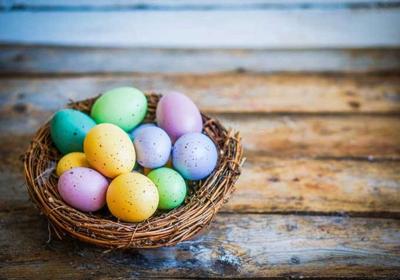ONE of the more popular holidays in the calendar is Easter—a time rich in religious significance, history and symbolism. This Christian festival commemorates the death and resurrection of Jesus as described in the New Testament.
Lent, a 40-day period of fasting and prayer, precedes Easter Sunday. The week leading up to Easter is known as Holy Week and includes Palm Sunday, Holy Thursday and Good Friday, the day Jesus was crucified.
While a Christian holiday, Easter’s roots can be traced back to ancient pagan traditions. Modern-day customs and rituals have evolved over the centuries—from the symbolism of Easter eggs to the myth of the Easter Bunny—and include diverse celebrations observed around the world.
Check out these little known five facts about Easter:
A moveable feast
One lesser-known aspect of Easter is the controversy surrounding when it takes place. Unlike fixed-date holidays such as Christmas, Easter, known as a moveable feast, varies each year. When Easter takes place is based on a complex set of calculations involving the lunar calendar and the spring equinox.
This method was established by the First Council of Nicaea in 325 ACE. However, disagreements among different Christian denominations over which calendar to use led to ongoing debates and controversies.
The Western church follows the Gregorian calendar, while the Eastern Orthodox Church uses the Julian calendar, resulting in Easter being celebrated on different dates by the two branches of Christianity.
It’s connection to pagan festivals
While Easter is predominantly known as a Christian holiday, its traditions are intertwined with ancient pagan celebrations. The timing of Easter is closely linked to the vernal equinox, which marks the start of spring in the Northern Hemisphere.
Early Christian leaders aligned Easter with pagan festivals such as Ostara, a celebration of the Germanic goddess of spring.
The adoption of pagan symbols—such as eggs and rabbits—further highlights this fusion of traditions.
The symbolism of eggs
The tradition of decorating eggs predates Christianity and has roots in various cultures. Ancient Egyptians, Persians and Romans exchanged decorated eggs as symbols of fertility and renewal in early spring.
Early Christians adopted this tradition, incorporating it into their Easter celebrations. Over the years, the practice evolved, with eggs being dyed in vibrant colours and designs.
In some cultures, eggs were also used as offerings to ward off evil spirits or as gifts to bring prosperity. Easter eggs remain a central symbol of the holiday, enjoyed through various customs such as egg hunts and egg rolling competitions.
Why are bunnies used?
The Easter Bunny, a figure associated with the holiday, has its origins in German folklore. The mythological creature known as “Osterhase” (Easter hare) was believed to bring eggs and other treats to children on Easter.
The tradition was brought to North America by German immigrants starting in the 18th century and evolved over time, with the hare transforming into the bunny. The idea of a rabbit delivering eggs may seem weird, but it originated from the hare’s association with fertility and spring.
A celebration by many cultures
In addition to the Christian observance of Easter, many cultures have their own unique customs. Easter traditions, as noted, vary across the Christian world. Many include sunrise services or late-night vigils and women wearing bonnets or hats to worship services.
For example, in Greece, Easter is celebrated with elaborate religious processions and feasts, while in Spain, the week leading up to Easter—known as “Semana Santa”—is marked by processions.
In Eastern European countries, like Russia, intricately decorated eggs called pysanky are a focal point of Easter festivities each spring. During Easter celebrations in Russian Orthodox churches, it’s common for worshippers to greet each other by saying “Christ is risen!” That is followed in response by, “He is truly risen!”






